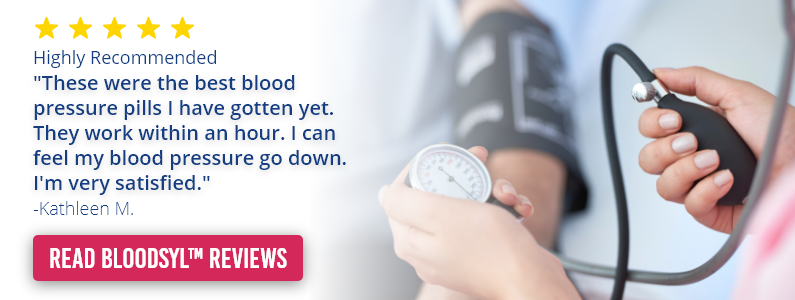Did you know that the average human heart beats around 100,000 times per day? As one of the most important organs in the body, your heart is constantly making sure your other organs are having their needs met. But when was the last time you took care of your heart’s needs? Monitoring heart health can help you to assess the risk of cardiovascular diseases and improve your health. There are several ways of doing so. Your cholesterol levels, blood pressure, heart rate variability, and aerobic capacity can each provide valuable insight into your heart health. Keep reading to discover how each of these are measured and how you can improve your scores.
1. Cholesterol
What is cholesterol?
Cholesterol is a fatty substance found in the blood that is essential for the body’s normal functioning. However, high levels of cholesterol, particularly LDL cholesterol (often referred to as “bad” cholesterol), can increase the risk of arterial plaque, heart disease, and stroke (1).
How do you know if your cholesterol is high?
High cholesterol doesn’t have any defining symptoms and is diagnosed based on blood tests. Your doctor can tell you if you have high cholesterol based on the total cholesterol, LDL, HDL, and triglycerides in your blood. If you do not have any specific risk factors, it is typically recommended that cholesterol be checked every 4-6 years (2). If you have an increased risk of heart disease or your cholesterol requires monitoring, your doctor will likely recommend more frequent check-ups.
Tips for lowering cholesterol:
- Adjust your diet – Try reducing your intake of saturated fats which are found in foods such as fatty meats, butter, hard cheese, and cakes and cookies (3). Instead, try to eat more fruits and vegetables, nuts and seeds, whole grains, and healthy fish.
- Exercise – Exercising raises HDL cholesterol which is the “good cholesterol” that removes fat and LDL (“bad cholesterol”) from inside the arteries (4). It’s generally recommended that adults do 150 minutes of moderate exercise per week or half of that if they are doing intense exercise. Moderate exercise can be as simple as going for a walk, so long as it gets your heart rate up.
- Manage stress – Stress increases cortisol, which over long periods of time can increase LDL cholesterol and decreases HDL cholesterol, thereby contributing to high cholesterol (5). Whether it means telling your boss that they’re demanding too much, practicing deep breathing, or taking a calming supplement, decreasing your stress may help your efforts to improve your cholesterol.
- Take a supplement – Supplements can provide the specific compounds and plant extracts that have demonstrated positive effects on cholesterol levels. For example, Cholestrin™ provides Berberine which can moderately lower LDL and increase HDL (6). It also includes Lecithin from sunflowers which has been found to help with improving cholesterol levels (7). These ingredients and more can be found help you to get your cholesterol levels back in order.
>>>Learn more about how Cholestrin™ works!
2. Blood Pressure
What is blood pressure?
Blood pressure measures the force of blood pushing against the walls of your arteries as your heart pumps blood throughout your body. It consists of two numbers: systolic pressure, the pressure when your heart beats, and diastolic pressure, the pressure when your heart rests between beats. Elevated blood pressure can strain the heart, arteries, and organs, increasing the risk of heart disease, stroke, and other health complications.
How do you know if your blood pressure is high?
High blood pressure, also known as hypertension, often presents with no noticeable symptoms, earning it the moniker “the silent killer.” The only way to know your blood pressure levels is to have them measured. Regular blood pressure screenings are crucial for early detection and management of hypertension. Generally, blood pressure readings should be less than 120/80 mmHg (8) and higher readings may indicate hypertension or the need for monitoring and intervention.
Tips for lowering blood pressure:
- Exercise & maintain a healthy weight – A sedentary lifestyle and excess weight can cause the heart to strain in order to keep up with the demands of the body. Regular exercise helps make the heart stronger, enabling it to pump blood more efficiently, thereby reducing the stress on the arteries (9).
- Reduce sodium intake – High sodium consumption contributes to elevated blood pressure. Limiting processed foods, canned goods, and salty snacks can help lower sodium intake and promote heart health (10).
- Manage stress – Chronic stress can elevate blood pressure levels (11). Incorporating stress-reduction techniques such as deep breathing exercises, meditation, or yoga into your daily routine can help promote relaxation and thus lower blood pressure.
- Talk to your doctor about medications or supplements – In some cases, lifestyle modifications alone may not be sufficient to control high blood pressure. Your healthcare provider may prescribe medications to help manage hypertension effectively. Alternatively, supplements, such as Bloodsyl™, may offer blood pressure-lowering effects.
>>>Read reviews and learn more about how Bloodsyl™ works!

3. Heart Rate Variability
What is heart rate variability?
Heart rate variability (HRV) measures the changes in the time intervals between each heartbeat. It’s controlled by the autonomic nervous system, which handles automatic body functions like heart rate, breathing, and digestion. HRV shows how your heart rate adjusts in different situations, like stress, relaxation, or exercise. Think of it as a way to see how well your body copes with everyday pressures.
A higher HRV usually indicates better health because it means your heart is adapting well to changes in your environment. On the other hand, a low HRV suggests that your heart isn’t adjusting its pace efficiently, which might not be ideal for your overall health and well-being. People use HRV to check how their body deals with stress, how their heart is working, and how they recover from exercise or intense activities.
How do you know if your heart rate variability is low?
Low heart rate variability may be indicated by consistent, unchanging intervals between heartbeats. Factors contributing to low HRV include high stress levels, poor sleep quality, sedentary lifestyle, and underlying health conditions. Monitoring HRV through specialized devices or apps can help identify low variability patterns, providing insights into potential cardiovascular issues and the need for lifestyle adjustments.
Tips for improving heart rate variability:
- Exercise – Exercising can strengthen the heart (it is a muscle after all) and thereby improve blood flow. Research suggests that exercise therapy can improve HRV by decreasing the fight-or-flight activity of the sympathetic nervous system (12). However, when it comes to exercising for HRV, it’s important to not over-exercise and put extra strain on the body which can actually decrease heart rate variability.
- Manage stress – Chronic stress causes the sympathetic nervous system (SNS) to be hyperactive and decreases activity of the parasympathetic nervous system (PSNS) (13). Since HRV depends on the harmony of the sympathetic and parasympathetic nervous systems, this dysregulation in the nervous system negatively impacts the heart rate variability.
- Sleep well – Quality sleep is essential for overall health and well-being, including heart rate variability (14). Aim for 7-9 hours of uninterrupted sleep each night, and establish a relaxing bedtime routine to promote restful sleep. Melatonin or a sleep supplement such as Sleepsyl™ may be able to help you achieve better sleep.
- Eat healthy – A balanced diet rich in fruits, vegetables, whole grains, lean proteins, and healthy fats provides essential nutrients that support cardiovascular health and optimal HRV.
4. Aerobic Capacity or VO2 Max
What is aerobic capacity?
Aerobic capacity, also known as VO2 max, refers to the maximum amount of oxygen your body can use during intense exercise. It’s a measure of your cardiovascular fitness and endurance, indicating how efficiently your heart, lungs, and muscles work together to supply oxygen-rich blood to your body during physical activity. The higher your aerobic capacity, the more oxygen your muscles can utilize, allowing you to perform better and endure longer during aerobic activities like running, cycling, or swimming. In essence, aerobic capacity reflects your body’s cardiovascular health and overall fitness level.
How do you know if your aerobic capacity is low?
Poor aerobic capacity can make it difficult to sustain physical activity for extended periods without feeling exhausted or out of breath. Recognizing low aerobic capacity involves understanding how your body responds during physical exertion. If your aerobic capacity is inadequate, you may find it challenging to sustain physical activity for extended periods without feeling excessively tired or out of breath. Everyday tasks like climbing stairs or walking short distances might leave you fatigued. Similarly, you might struggle to keep pace with others during physical activities or sports, experiencing a rapid heart rate and shortness of breath even during moderate-intensity exercise. Despite consistent efforts, you may notice little progress or a plateau in your fitness goals. These signs collectively indicate that your aerobic capacity may be suboptimal, warranting attention to improve your cardiovascular health and endurance.
Tips for improving aerobic capacity:
- Practice aerobic exercise – Engage in regular aerobic activities, gradually increasing the exercise intensity to condition your heart. For example, brisk walking, jogging, cycling, swimming, or dancing may improve cardiovascular fitness and endurance.
- Try interval training – Interval training can boost aerobic capacity, improve cardiovascular health, and enhance overall fitness levels (15). Incorporate interval training into your workout routine by alternating between periods of high-intensity exercise and active recovery.
- Eat a balanced diet – Fuel your body with a nutritious diet rich in complex carbohydrates, lean proteins, healthy fats, vitamins, and minerals. Proper nutrition supports optimal energy levels, muscle function, and cardiovascular health, all of which contribute to improved aerobic capacity.
- Practice yoga – Yoga combines physical postures, breathwork, and mindfulness techniques to promote flexibility, strength, and relaxation. Certain yoga practices, such as Asanas & Pranayama, can enhance aerobic capacity while reducing stress and promoting mental clarity (16,17).
Conclusion
Regular monitoring, mindful choices, and proactive interventions pave the way for a vibrant, heart-healthy life. From understanding the nuances of cholesterol and blood pressure to unraveling the significance of heart rate variability and aerobic capacity, we’ve uncovered invaluable insights into assessing and enhancing cardiovascular wellness. Let this guide be your compass as you navigate the path to better cardiovascular wellness. With each step forward, may your heart beat stronger, your arteries flow clearer, and your spirit soar higher.


